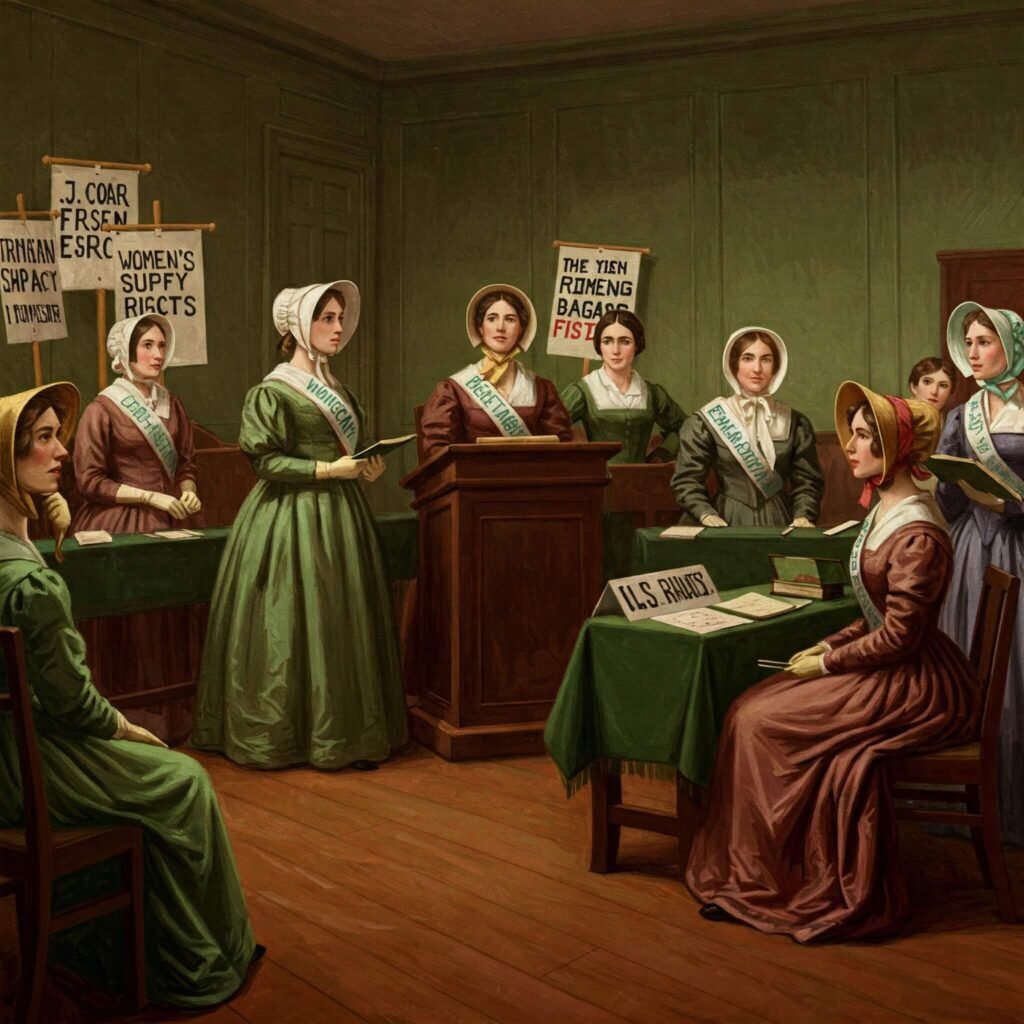The struggle for women’s suffrage was a monumental fight that reshaped democracy worldwide. From tireless activism to groundbreaking legislation, women’s right to vote was hard-earned through decades of resilience. But the journey didn’t end with victory at the ballot box—new challenges and opportunities lie ahead. This article dives into the history of women’s suffrage, its global impact, and the next steps for gender equality in voting and beyond.
The Roots of the Suffrage Movement
The women’s suffrage movement began in the 19th century, fueled by a growing demand for equality. Women, long denied a voice in governance, started organizing to challenge systemic exclusion. The movement was global, with different countries achieving milestones at different times.
- Seneca Falls Convention (1848): The first women’s rights convention in the U.S., where activists like Elizabeth Cady Stanton demanded voting rights.
- New Zealand’s Breakthrough (1893): The first country to grant women full voting rights, setting a global precedent.
- UK Suffragettes: Led by Emmeline Pankhurst, British women used bold tactics, from protests to hunger strikes, to secure partial voting rights in 1918.

Key Milestones in Women’s Right to Vote
The path to women’s suffrage was marked by significant victories, each building momentum for global change. Here are some pivotal moments:
- United States (1920): The 19th Amendment granted women the right to vote after decades of activism by figures like Susan B. Anthony.
- United Kingdom (1928): Full voting equality was achieved, expanding rights beyond property-owning women.
- India (1950): The new constitution ensured universal suffrage, empowering millions of women post-independence.
- Saudi Arabia (2015): One of the last countries to grant women voting rights, marking a slow but notable shift.
Outbound link: Learn more about the 19th Amendment at National Archives.

Challenges Along the Way
The suffrage movement faced fierce opposition. Women were ridiculed, arrested, and even subjected to violence. Key challenges included:
- Societal Norms: Traditional views confined women to domestic roles, dismissing their political agency.
- Legal Barriers: Laws explicitly barred women from voting, requiring constitutional changes.
- Racial Discrimination: In the U.S., Black women faced additional hurdles due to Jim Crow laws, even after 1920.
Despite these obstacles, the resilience of activists paved the way for progress.
The Global Impact of Women’s Suffrage
Winning the women’s right to vote transformed societies. Women’s voices in politics led to policies addressing education, healthcare, and labor rights. Data shows the impact:
- Increased Political Participation: Countries with women’s suffrage saw a 10-20% rise in voter turnout (Source: World Bank).
- Policy Shifts: Women’s voting rights correlated with stronger social welfare programs in multiple nations.
However, disparities remain. In some regions, cultural barriers and voter suppression still limit women’s participation.

What’s Next for Gender Equality in Voting?
The fight for women’s suffrage continues in new forms. While most countries now grant women voting rights, challenges like voter ID laws, misinformation, and underrepresentation in leadership persist. Here’s what’s next:
- Closing the Representation Gap: Women hold only 26% of parliamentary seats globally (Source: UN Women). Advocacy for quotas and mentorship can help.
- Combating Voter Suppression: Ensuring accessible polling stations and fair ID requirements is critical.
- Empowering Young Women: Education and civic engagement programs can inspire the next generation of voters.
Actionable Takeaway: Support organizations like League of Women Voters to promote voter education and fair elections.
Why Women’s Suffrage Still Matters
The legacy of the suffrage movement reminds us that democracy is a work in progress. Every vote counts, and women’s voices are vital for shaping a just future. By learning from history and addressing modern barriers, we can build on the foundation laid by suffragettes.
Call to Action: Share this article to spark conversations about women’s suffrage and encourage voter participation in your community.



































